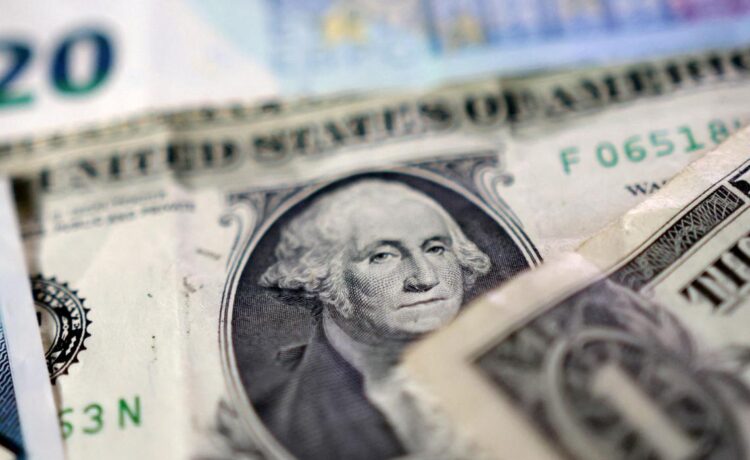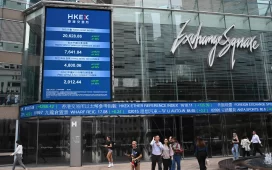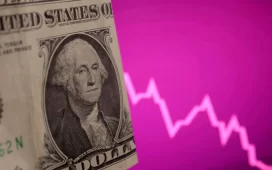NEW YORK – The US dollar got a fresh jolt to start the week as speculation around potential trade deals sparked an extraordinary spike in Taiwan’s currency and reverberated across global foreign exchange markets.
Already under pressure as President Donald Trump’s economic agenda dents attitudes around American assets, the greenback weakened further on May 5 against most major currencies, with a Bloomberg gauge of the dollar falling about 0.2 per cent as of 1.20pm in New York.
Taiwan’s dollar led gains among the 16 major peers tracked by Bloomberg, earlier jumping the most in more than three decades on an intraday basis. The yen rallied some 0.6 per cent, leading gains among the Group-of-10 nations, while the euro pushed above the US$1.13 mark. China’s markets were closed for a public holiday.
Mr Trump’s aggressive trade talk has rattled macro markets since he took office in January, undermining the dollar’s traditional haven role in times of stress and leading investors to allocate away from US assets.
In recent days, investor focus has been on the scope and nature of any trade and tariff deals that the Trump administration will negotiate with key partners – and whether that will involve a coordinated effort among global policymakers to further weaken the greenback.
“We’re all feeling a little shell-shocked in this part of the world,” Arindam Sandilya, a Singapore-based global forex strategist at JPMorgan Chase & Co., said on a podcast describing the recent moves in Asian currencies. “The large and synchronized nature of currency appreciation is fueling talk of some sort of currency accord among the region’s central banks.”
While selling has moderated in May, the Bloomberg Dollar Spot Index is still down nearly 7 per cent in 2025, the most since its inception 20 years ago. Traders in the speculative derivatives market, meanwhile, are the most bearish on the dollar since September, according to the latest data from the Commodity Futures Trading Commission.
The surge in the Taiwan dollar since May 2 – driven at least in part on on unconfirmed speculation that any possible trade deal with the US could involve a recalibration in exchange rates – typifies the dilemma now faced by global policymakers as investors pile out of American assets amid trade policy uncertainty.
The rally in Taiwan’s currency has the potential to spill over to the rest of the developing world, said Brad Bechtel, global head of FX at Jefferies. “Or it portends some sort of currency agreement between the US and China or the US and the region that will result in all Asian currencies strengthening,” he said.
In California on May 5, US Treasury Secretary Scott Bessent countered the idea that investors are selling American assets in response to the Trump administration’s economic policies, calling the US the “premier destination” for global capital. He also spoke on trade.
“Getting better terms of trade is not always a straight line, not always a pleasant process, but I think at the end the trading relationships will be stronger, our security and values ties will still be there,” Mr Bessent said in a conversation at the Milken Institute Global Conference.
Central banks and financial officials are responding to the sharp appreciation in local currencies.
In Taiwan, the governor of the central bank said at an emergency briefing on May 5 that market commentary had triggered “excessive” buying of the Taiwan dollar by exporters and foreign investors. The nation’s markets regulator, meanwhile, met with life insurers holding US dollar-based bonds that are particularly exposed to the rally in the domestic currency.
“Lower tariff rates and progress on trade deals point to the disruption to the US economy being potentially less than feared, but also could boost Asian economies and their lagging currencies,” said Skylar Montgomery Koning, a currency analyst at Barclays in New York. BLOOMBERG
Join ST’s Telegram channel and get the latest breaking news delivered to you.





